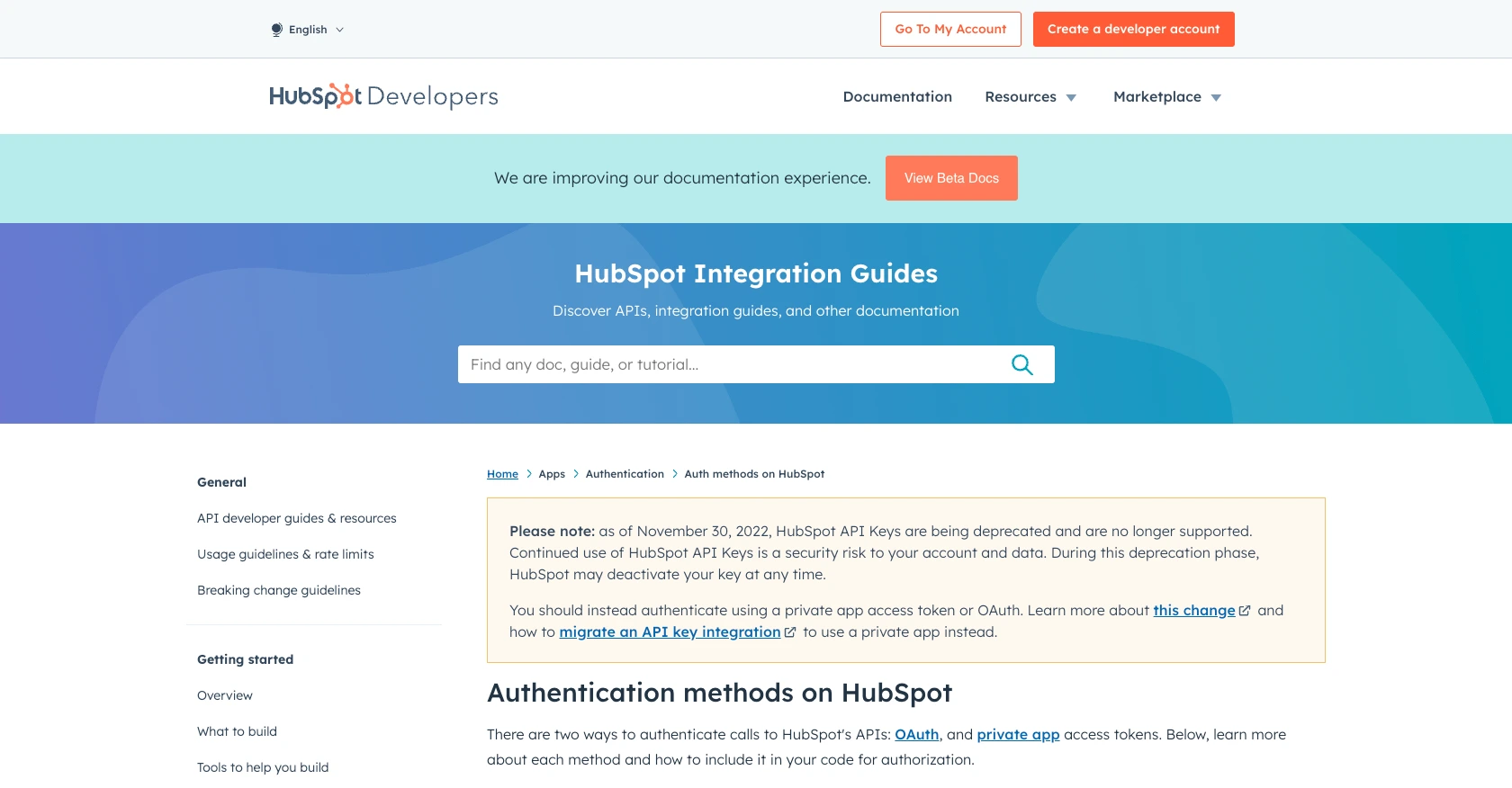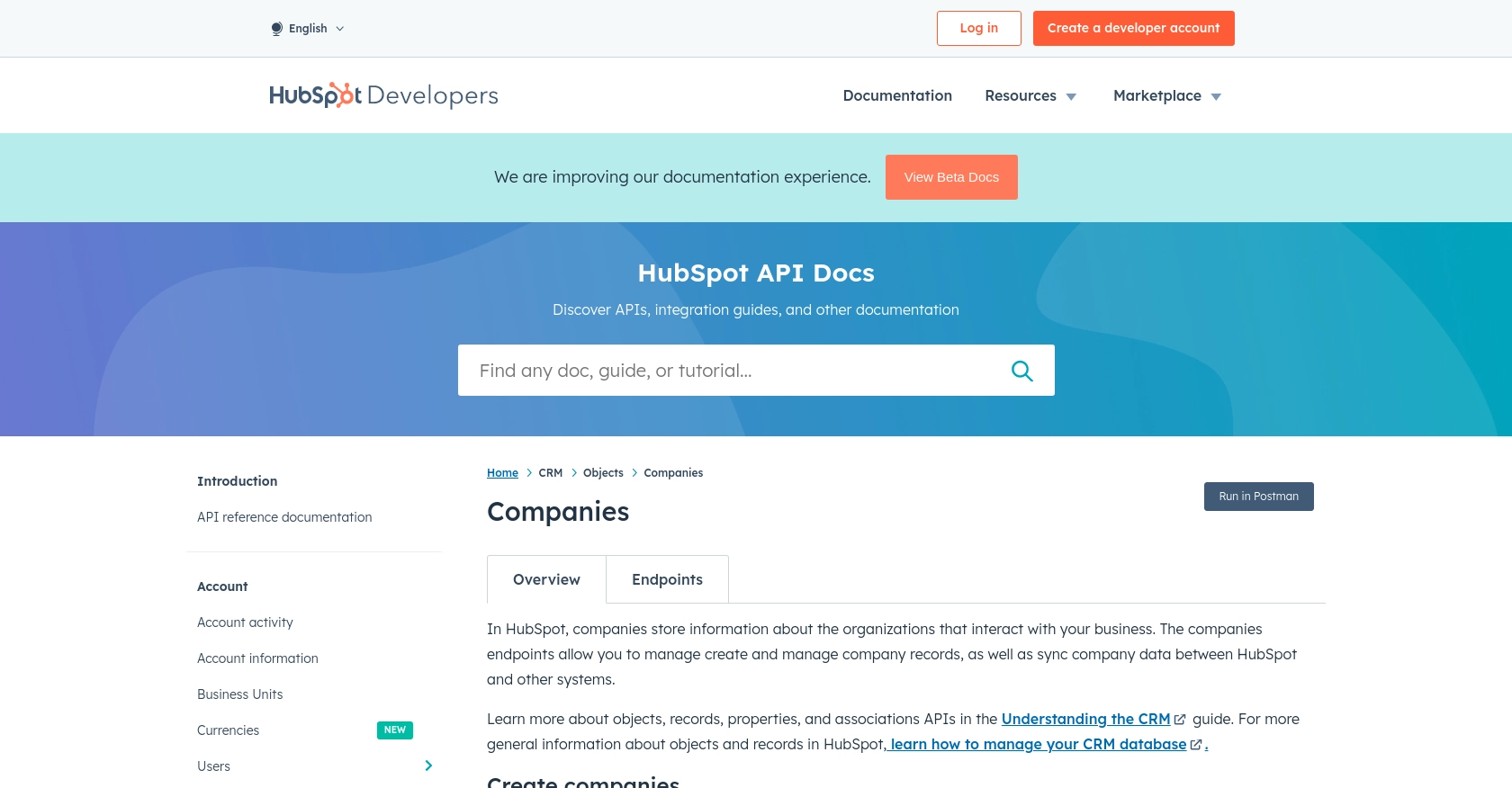How to Get Companies with the Hubspot API in Python

Introduction to HubSpot API for Company Data Integration
HubSpot is a comprehensive CRM platform that offers a suite of tools to help businesses manage their marketing, sales, and customer service efforts. Known for its user-friendly interface and robust features, HubSpot is a popular choice for companies looking to streamline their operations and improve customer engagement.
For developers, integrating with HubSpot's API provides the opportunity to access and manage company data efficiently. By leveraging the HubSpot API, developers can automate tasks such as retrieving company information, which can be used to enhance business intelligence and streamline workflows.
For example, a developer might use the HubSpot API to pull company data into a custom dashboard, providing sales teams with real-time insights into potential leads and customer interactions. This integration can significantly enhance decision-making processes and improve overall business performance.
Setting Up Your HubSpot Test or Sandbox Account for API Integration
Before you can start integrating with the HubSpot API to retrieve company data, you'll need to set up a test or sandbox account. This will allow you to safely experiment with API calls without affecting live data.
Creating a HubSpot Developer Account
If you don't already have a HubSpot account, you'll need to create one. Follow these steps to get started:
- Visit the HubSpot Developer Portal.
- Click on "Create a developer account" and fill out the necessary information.
- Once your account is created, log in to access the developer dashboard.
Setting Up a HubSpot Sandbox Environment
HubSpot provides a sandbox environment where you can test your integrations. To set up a sandbox account:
- Navigate to the "Settings" section in your HubSpot account.
- Under "Integrations," select "Sandbox Accounts."
- Follow the prompts to create a new sandbox environment. This will mirror your production account but with test data.
Creating a HubSpot App for OAuth Authentication
Since the HubSpot API uses OAuth for authentication, you'll need to create an app to obtain the necessary credentials:
- In your developer account, go to the "Apps" section.
- Click on "Create a private app" and provide the required details.
- Under "Scopes," ensure you select the necessary permissions for accessing company data, such as
crm.objects.companies.read. - Once your app is created, you'll receive a client ID and client secret. Keep these credentials secure as they are essential for authenticating API requests.
Generating an OAuth Access Token
With your app set up, you can now generate an OAuth access token to authenticate your API calls:
- Use the client ID and client secret to request an access token from HubSpot's OAuth server.
- Include the access token in the authorization header of your API requests, as shown in the example below:
headers = {"Authorization": "Bearer YOUR_ACCESS_TOKEN"}For more details on OAuth authentication, refer to the HubSpot OAuth Documentation.

sbb-itb-96038d7
Making API Calls to Retrieve Company Data from HubSpot Using Python
To interact with the HubSpot API and retrieve company data, you'll need to use Python, a versatile and widely-used programming language. This section will guide you through the necessary steps to set up your environment, write the code, and execute API calls effectively.
Setting Up Your Python Environment for HubSpot API Integration
Before making API calls, ensure you have the following prerequisites installed on your machine:
- Python 3.11.1 or later
- The Python package installer, pip
Once you have these installed, open your terminal or command prompt and install the requests library, which is essential for making HTTP requests:
pip install requestsWriting Python Code to Retrieve Company Data from HubSpot
With your environment set up, you can now write the Python code to retrieve company data from HubSpot. Create a file named get_hubspot_companies.py and add the following code:
import requests
# Set the API endpoint and headers
endpoint = "https://api.hubapi.com/crm/v3/objects/companies"
headers = {"Authorization": "Bearer YOUR_ACCESS_TOKEN"}
# Make a GET request to the API
response = requests.get(endpoint, headers=headers)
# Parse the JSON data from the response
data = response.json()
# Loop through the companies and print their information
for company in data.get("results", []):
print(company)Replace YOUR_ACCESS_TOKEN with the OAuth access token you generated earlier. This code snippet sets up the API endpoint and headers, makes a GET request to retrieve company data, and prints the results.
Executing the Python Script to Fetch Company Data from HubSpot
Run the script from your terminal or command line using the following command:
python get_hubspot_companies.pyUpon successful execution, you should see a list of companies retrieved from your HubSpot account displayed in the terminal.
Verifying Successful API Requests and Handling Errors
To ensure your API request was successful, check the response status code. A status code of 200 indicates success. You can also verify the retrieved data by cross-referencing it with the company records in your HubSpot sandbox environment.
If you encounter errors, handle them gracefully by checking the status code and printing an appropriate message. For example:
if response.status_code == 200:
print("Companies retrieved successfully.")
else:
print(f"Failed to retrieve companies: {response.status_code} - {response.text}")Refer to the HubSpot API documentation for more details on error codes and their meanings.

Conclusion and Best Practices for Integrating HubSpot API with Python
Integrating with the HubSpot API using Python provides developers with a powerful tool to access and manage company data efficiently. By following the steps outlined in this guide, you can streamline your workflows and enhance your business intelligence capabilities.
Best Practices for Secure and Efficient HubSpot API Integration
- Secure Storage of Credentials: Always store your OAuth credentials securely. Consider using environment variables or a secure vault to keep your client ID, client secret, and access tokens safe.
- Handle Rate Limiting: Be mindful of HubSpot's rate limits. For OAuth apps, the limit is 100 requests every 10 seconds per HubSpot account. Implement retry logic to handle 429 error responses gracefully. For more details, refer to the HubSpot API usage guidelines.
- Data Standardization: Ensure that data retrieved from HubSpot is standardized and transformed as needed to fit your application's requirements. This will help maintain consistency across your systems.
- Error Handling: Implement robust error handling to manage API call failures. Log errors for further analysis and provide meaningful feedback to users when issues occur.
Streamlining Integrations with Endgrate
While integrating with HubSpot's API can be highly beneficial, managing multiple integrations can become complex and time-consuming. Endgrate offers a solution by providing a unified API endpoint that connects to various platforms, including HubSpot. This allows you to build once for each use case and streamline your integration processes.
By leveraging Endgrate, you can save time and resources, allowing your team to focus on core product development while delivering an intuitive integration experience for your customers. Explore how Endgrate can simplify your integration needs by visiting Endgrate's website.
Read More
- https://endgrate.com/provider/hubspot
- https://developers.hubspot.com/docs/api/overview
- https://developers.hubspot.com/docs/api/intro-to-auth
- https://developers.hubspot.com/docs/api/usage-details
- https://developers.hubspot.com/docs/api/scopes
- https://developers.hubspot.com/docs/api/crm/companies
- https://developers.hubspot.com/docs/api/crm/properties
Ready to get started?
